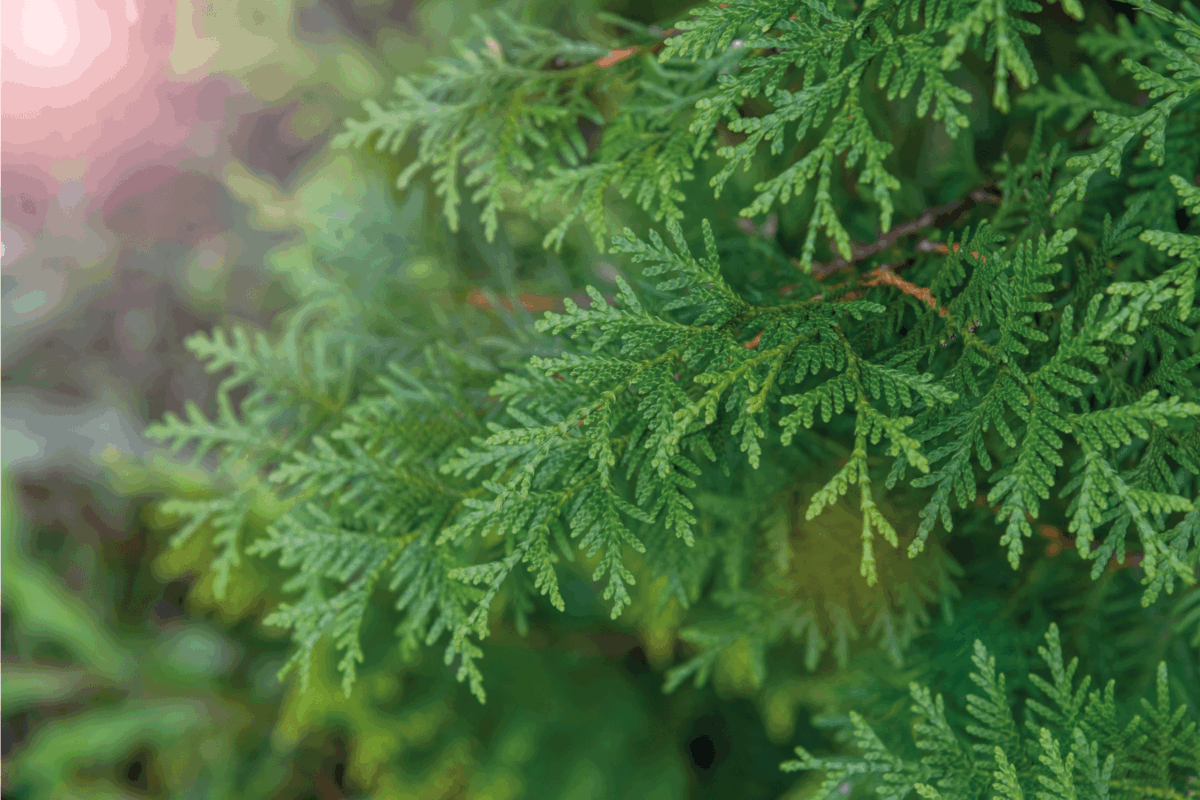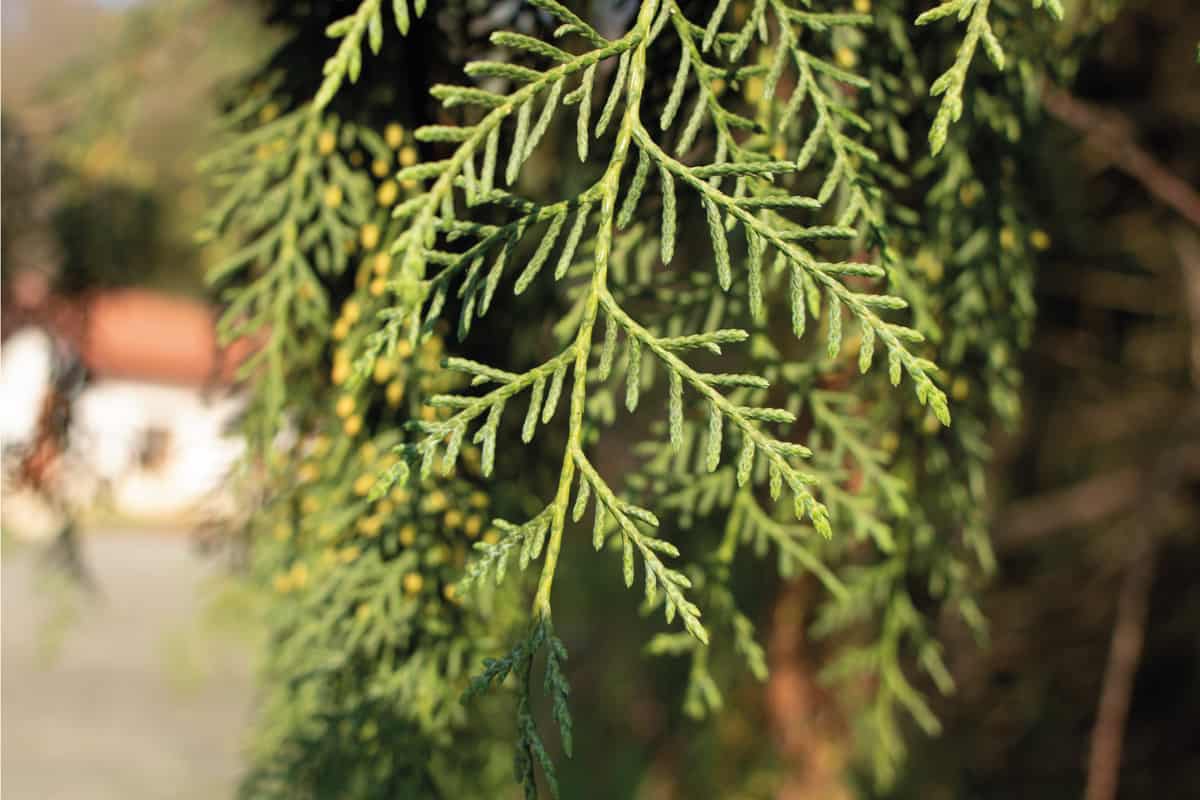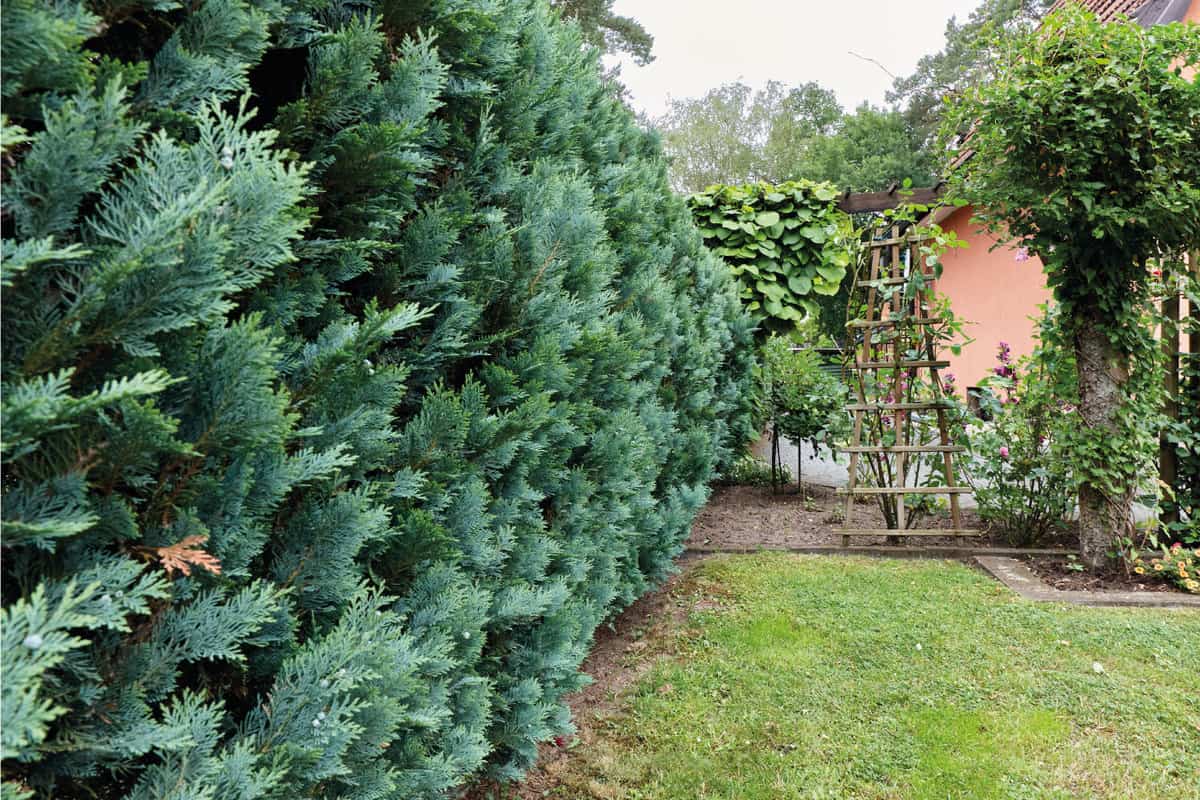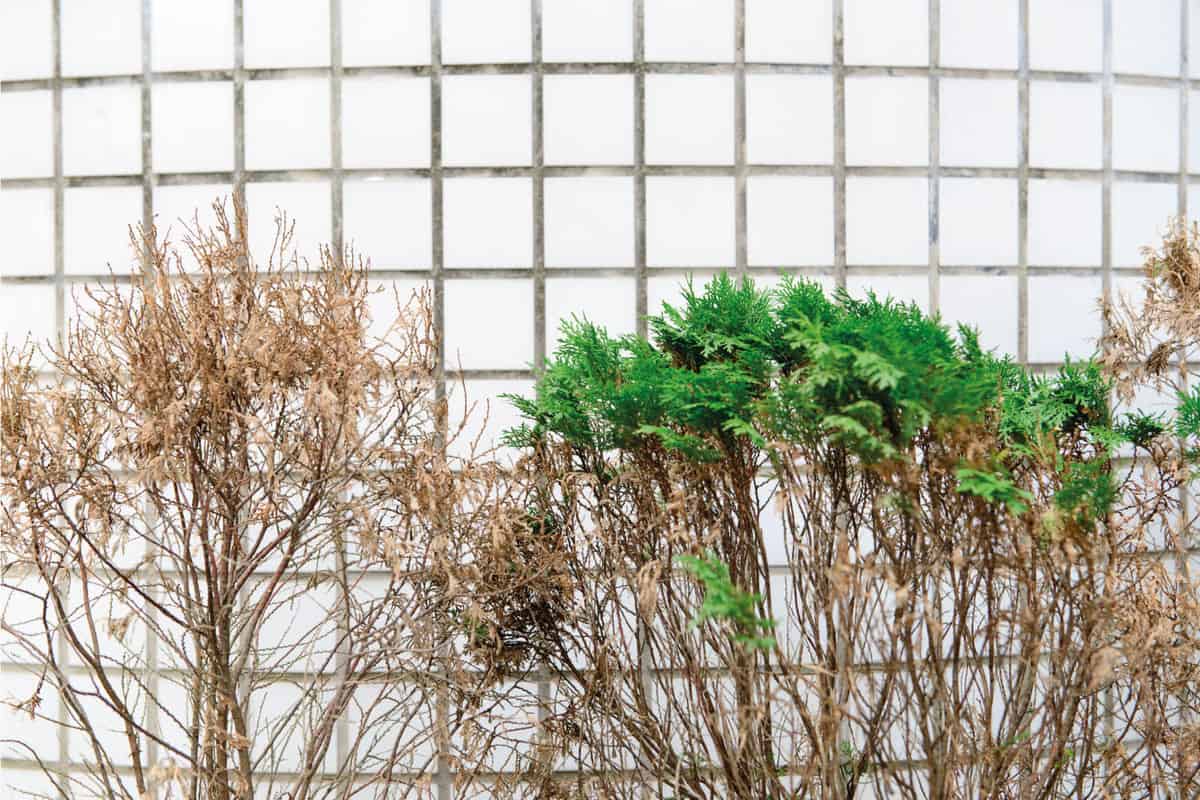Arborvitae trees are a type of coniferous tree. Belonging to the cypress family, there are five known species of arborvitae. This name comes from the Latin phrase, "tree of life." These ornamental trees are often utilized as hedges or privacy trees. Are you thinking of getting a few of these evergreens to spice up your landscape? You probably have some questions about the care, lifespan, and growth of these beauties. We have gathered our research to explain how long arborvitae trees live, which species live the longest, and more.
These shrub-like trees come in a variety of shapes and sizes. Arborvitaes are fast growing and offer thick foliage, making the perfect natural fence. On average, the lifespan of an arborvitae tree can be between 50 and 150 years. This number will vary pending on the species of tree and the conditions it lives in.
Species of arborvitae are native to East Asia and North America. It is common to see them used in landscaping projects across the world. Keep reading as we discuss the details of each species, including their ideal growing conditions.
![Arborvitae tree on a wooden barrel pot with other smaller plants on its base. How Long Do Arborvitae Live [By Type]](https://gardentabs.com/wp-content/uploads/2021/07/Arborvitae-tree-on-a-wooden-barrel-pot-with-other-smaller-plants-on-its-base.-How-Long-Do-Arborvitae-Live-By-Type.png)
Species Of Arborvitae Trees
Arborvitae trees have their place in almost any garden design. These conifers are versatile and serve a wide variety of purpose, including their ability to become a living fence. Their lacy, flat needles range in colors from green to gold, adding to their aesthetic.
Not only are they pleasing to the eye, but these beauties are fast-growing. Adding 2-3 feet per year, they will grow into your ideal garden design in no time. Let's take a closer look at the individual species of arborvitae trees available to you.
![Bright green plants in plastic pots stand on a plank area. How Long Do Arborvitae Live [By Type]](https://gardentabs.com/wp-content/uploads/2021/07/Bright-green-plants-in-plastic-pots-stand-on-a-plank-area.png)
American or Eastern Arborvitae
The American or Eastern Arborvitae is native to Canada and the United States. Having the scientific name of Thuja occidentalis, this species is widely grown as an ornamental plant. There are a number of common names associated with this tree including Northern White Cedar, Swamp Cedar, and Eastern White Cedar.

This small to medium-sized tree is made up of red-brown bark and fan-like branches. These branches include flat leaves with a scaled appearance and thin seed cones with a yellowish, green color. The American Arborvitae will flourish in conditions with full sun and acidic, moist soils. You can expect this species of arborvitae to live 30-50 years in your garden, but some of the oldest arborvitae in the wild have been recorded to reach ages over 1,000 years old.
Giant or Western Arborvitae
The Giant Arborvitae or Thuja plicata are native to North America. The Western Arborvitae is also referred to as the Pacific Red Cedar, Giant Cedar, or Shinglewood. This species of tree grows to be huge, hence the nickname, "Giant Arborvitae." You can find heights of 200 to 230 feet tall and trunks with a diameter of 10 to 23 feet.
The leaves grow in opposite pairs and are marked with white stomatal bands. These leaves have a strong scent and are said to smell like pineapple when crushed. Among the foliage sprays, you will see slender cones that eventually open up to reveal seeds. Western Arborvitaes grow best in partial shade, receiving at least 4 hours per day of direct sunlight. They are happy in either acidic or alkaline soils but prefer heavy clay or sandy environments. The life expectancy of a Giant Cedar is up to 40 years.
Korean Thuja
There is little known about the Korean Thuja or Thuja koraiensis. This species is native to Korea and the Northeast part of China. Nature reserves in both China and South Korea work to preserve this species due to endangerment caused by habitat loss. Korean Arborvitaes are small evergreens with trailing branches. The foliage tends to be dark green with wide stomatal wax bands underneath.

Korean Thuja is not very common to find in the garden. This is due to the low availability of seeds. If you do happen to plant this species of tree, their ideal growing conditions consist of partial to full sun and a soil PH ranging from 4.5-8. These trees enjoy moist to normal soil and are said to be a low maintenance tree. Living in your garden, you can expect a Korean Thuja to live up to 15 years.
Japanese Thuja
The Japanese Thuja is a medium-sized species of arborvitae. The scientific name is Thuja standishii. You may have also heard this tree referred to by their Japanese names, Nezuko or Kurobe. This tree is native to Southern Japan, on islands Honshu and Shikoku.

The sprays on this tree species are flat. They appear green on the top with a narrow white stomatal band below. On the branches, you will also find oval cones that are yellow or green to start and turn red-brown when they ripen. The Japanese Thuja can be grown as a tree or a shrub. There is little information reported on the lifespan of this tree. Samples taken from Japanese Arborvitae in their natural environments showed ages as old as 283 years.
Sichuan Thuja
Thuja sutchuenensis is a species of arborvitae that is native only to Chengkou County in China. The Sichuan Thuja is a medium-sized tree with bark that ranges in color from reddish-brown to gray-brown. The leaves are shiny and bright green with a narrow white stomatal band on the underside. This species of arborvitae is set apart by its smaller leaves and cones.

Similar to other types of arborvitae, this tree needs moist soil and does not tolerate dry conditions. Cool soil temperatures and regular watering is needed to keep these trees happy.
This tree was presumed to be extinct caused by over-cutting until it was rediscovered in 1999. The area the tree was found in has become a special protection area to keep this species safe from extinction. The surviving population is said to have trees up to 600 years old.
Learn more about caring for arborvitae trees on our blog post, 7 Best Arborvitae Fertilizers.
Which Arborvitae Has The Longest Lifespan?
The life expectancy of arborvitae changes drastically depending on where it lives: in its native environment versus your garden. The American or Eastern Arborvitae has the oldest recorded trees in the wild, with some reaching well over 1,000 years old.

Even arborvitae planted in the garden are likely to outlive you. The American Arborvitae or Swamp Cedar can reach over 50 years old when planted in the yard and are well taken care of. Korean Thuja is on the other side of the spectrum with the shortest lifespan.
What Causes Arborvitae To Die?
It is a sad sight when your arborvitae tree begins to turn brown and die off. There are some telltale signs that your specimen is suffering. Look for brittle and cracked bark, copious amounts of deadwood, and a lack of healthy leaves. You need to find the root of the browning dead spots, and then you can work to treat and hopefully revive your tree.

When Arborvitae begin to die, they may be experiencing a type of stress from environmental and care conditions or suffering from an infestation of pests. Stress can be induced due to not enough water, high temperatures, drying winds, not enough sunlight, or damage to the roots.
If it is a care issue, try pruning off the dead areas, watering regularly, and adding fertilizer during the spring. Maybe you've paid close attention to your arborvitae's needs and are surprised with their decline. You may be dealing with a pest or fungus infection.
There are several species that like to feed on these trees including rabbits, deer, and moose. There is a concern for insects like bagworms, spider mites, cedar tree borers, and arborvitae weevils. If your branch tips begin to turn brown and die back, this is most likely a fungal disease. Once you find your culprit, you can begin to treat your arborvitae and provide the much-needed care for survival.
Final Thoughts
The arborvitae tree makes a great addition to the garden and an even better natural, living fence. Each species of this tree has quite a long lifespan, expect these green beauties to outlive you. The most common of these evergreens to find on a landscape are the American or Eastern Arborvitae and the Giant Cedar. The Eastern Arborvitae takes the cake for the longest lifespan and makes a great addition to any garden.
We hope you found this article insightful when it comes to arborvitae trees, and maybe you found the species that is right for you. Happy Gardening!
Looking for more options when it comes to your landscaping project? Have a look at our blog post: 12 Types Of Pine Trees For Landscaping.
Read more on our blog post about trees: How Much Does A Tree Weigh?
